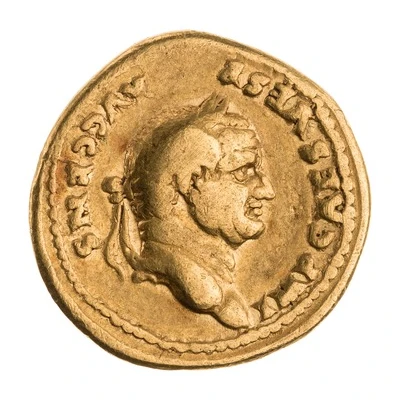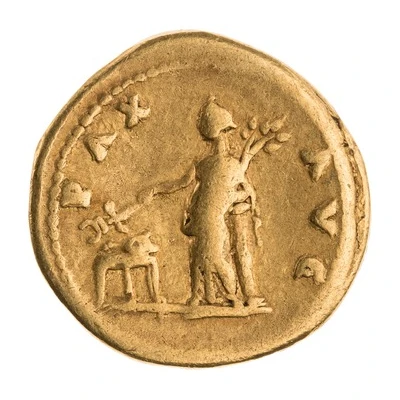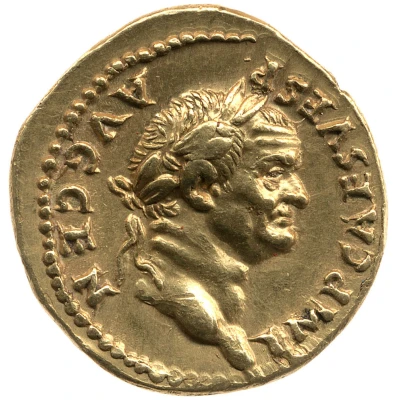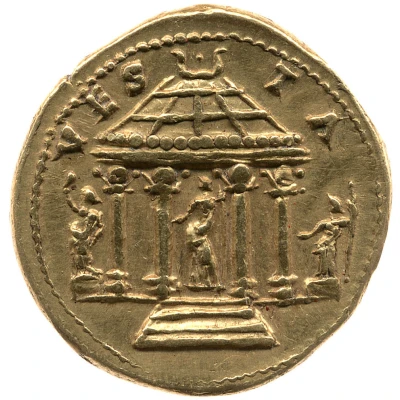


© American Numismatic Society (ANS)
Aureus - Vespasian PAX AVG; Pax
73 year| Gold | 7.2 g | 20.5 mm |
| Issuer | Rome › Roman Empire (27 BC - 395 AD) |
|---|---|
| Emperor | Vespasian (Titus Flavius Vespasianus) (69-79) |
| Type | Standard circulation coin |
| Year | 73 |
| Value | 1 Aureus = 25 Denarii |
| Currency | Denarius, Reform of Augustus (27 BC – AD 215) |
| Composition | Gold |
| Weight | 7.2 g |
| Diameter | 20.5 mm |
| Shape | Round (irregular) |
| Technique | Hammered |
| Demonetized | Yes |
| Updated | 2024-10-05 |
| Numista | N#249449 |
|---|---|
| Rarity index | 100% |
Reverse
Pax, draped, standing left, extending winged caduceus in right hand over folli (purse) lying on tripod left, holding branch in left hand, resting left arm on a garlanded column.
Script: Latin
Lettering: PAX AVG
Translation:
Pax Augusti.
Peace of the emperor (Augustus).
Comment
Mass varies: 6.93–7.5 g;Diameter varies: 20–20.5 mm;
Source: Online Coins of the Roman Empire (OCRE)
Interesting fact
The Aureus was a gold coin used in ancient Rome, and the Vespasian coin was minted during the reign of Emperor Vespasian (69-79 AD). The coin's obverse (front) features the image of Vespasian, while the reverse (back) bears the image of Pax, the Roman goddess of peace, holding an olive branch and a scepter. The coin's inscription, "PAX AVG," stands for "Pax Augusta," which means "Peace of the Augustus," referring to the Roman Empire's claim to have brought peace and stability to the region. This coin is interesting because it highlights the importance of peace and stability in the Roman Empire's ideology and propaganda. The image of Pax on the coin's reverse is a symbol of the empire's desire to promote peace and prosperity throughout its territories, while the inscription "PAX AVG" serves as a reminder of the empire's claim to have achieved this goal through the leadership of its emperors, starting with Augustus. Overall, the Aureus - Vespasian (PAX AVG; Pax) (73) coin is a fascinating piece of history that provides insight into the Roman Empire's values, ideology, and propaganda during the reign of Emperor Vespasian.

